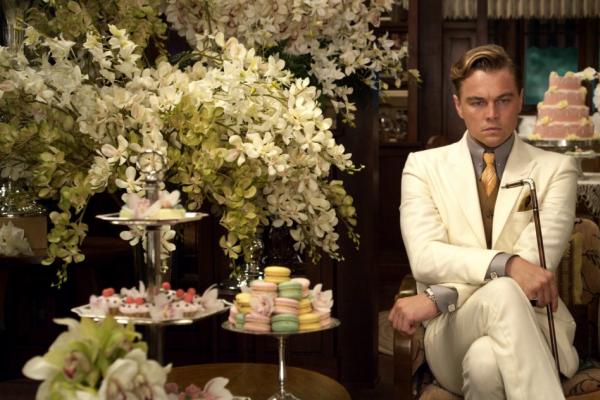The Great Gatsby doesn’t exactly fit the mold for a story about poverty. It doesn’t play into the typical genre created by Dickens or Sinclair meant to incite social change by depicting feeble orphans or working-class suffering. Gatsby is a story of excess: of tall buildings, big parties, fancy clothes, shiny cars—all that 1920s glam and glitz.
And yet — distilled to its core, The Great Gatsby is a story of poorness from the lens of richness, a rags-to-riches story where we only get to see the riches. Though high school English classes across the country paint Jay Gatsby as the poster child for the American dream and its subsequent loss, The Great Gatsby gets its poignancy not from what is lost but rather what lingers — Gatsby’s offstage childhood poverty that not even money can erase. For underneath Jay Gatsby’s million-dollar façade is James Gatz, a college-dropout, janitor-turned-swindler “young roughneck” from a poor family. The tragedy of the novel lies in the idea that the past cannot be shed and identity inherited at birth is a permanent, pervasive thing — quite the opposite of the American you-can-be-whoever-you-want-to-be sentiment. We see in the scenes that depict his overdone parties, his library of uncut, untouched books, and his mountainous pile of expensive shirts how Gatsby is merely gesturing towards the wealthy class rather than actually inhabiting it; and his desperate invitation to be viewed and affirmed as a member of that class thereby undercuts the authenticity of these gestures. Gatsby’s extreme excess is a compensation for the inherent deficiency of socioeconomic capital that he was born into, such that even his big house and expensive cars become a monument to his poverty, rather than proof of his wealth.
In showing us the holes in Gatsby’s façade, Fitzgerald redefines what it means to be poor, expanding its effect beyond mere economic status. If money is not a universal equalizer — if Gatsby is still somehow “unworthy” of Daisy in spite of his wealth — then Fitzgerald opens up new conceptions of poverty as a both a material and immaterial lack, a poverty of social, psychological, ethical, and even racial categories. How’s that for breaking the mold?
With Gatsby as a figure that simultaneously emblematizes the American Dream and poorness, the entire novel — and even American nationalism itself — is thrown into crisis as the persistent presence of poverty threatens to undermine the very ideologies upon which America is founded. In order for the novel to emerge as transcendent, Gatsby himself must transcend; yet that “foul dust” floating always in the “wake of his dreams” makes this impossible. Poverty (and the inherent deficiencies embedded within poverty) inhibits our ability to posit Gatsby as an allegory of the American nation, its promises, hopes, and dreams — and we, like Nick Carraway, are left acutely disillusioned.
It is no coincidence that Baz Luhrman is resurrecting The Great Gatsby at this particular moment in time: the gap between the rich and poor hasn’t been this extreme since the 1920s. Alongside the American Dream is the American Nightmare — the traumatic paradox of want amidst wealth. As the problem of poverty persists, haunts, and ultimately destroys Jay Gatsby, our American hero, we must finally confront poverty as a category so central to Americanness itself that it demands attention.
Claire Shalinsky is graduating in June with a degree in English from University of California, Davis. Her passions for traveling, writing, and social justice activism are pointing her towards a career that, indeed, tackles the problem of poverty.
Got something to say about what you're reading? We value your feedback!
